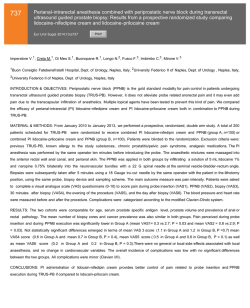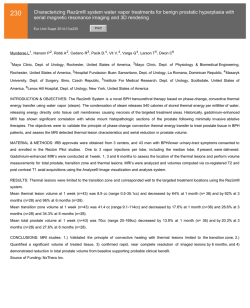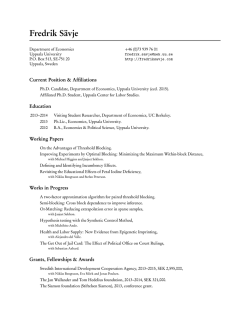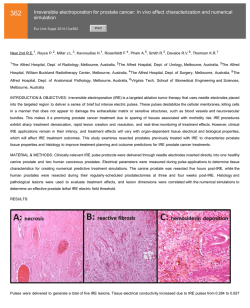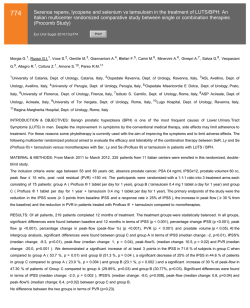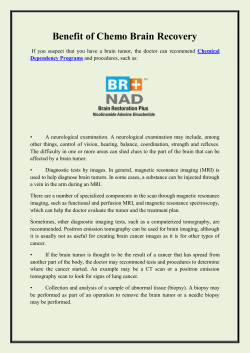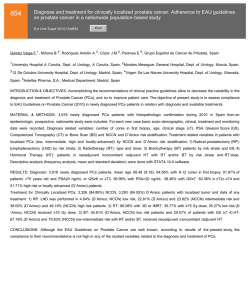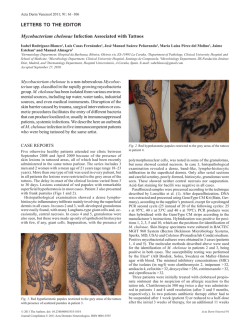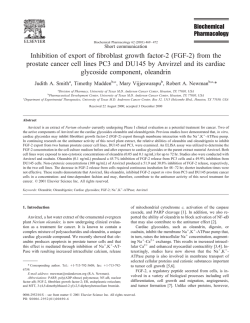
1-s2.0-S1569905614608113-main
823 Infections after transrectal ultrasound guided prostate biopsy - a population based study Eur Urol Suppl 2014;13;e823 Print! Print! Lundström K-J. 1 , Drevin L. 2 , Carlson S. 3 , Garmo H.2 , Loeb S. 4 , Stattin P. 5 , Bill Axelson A. 6 1 Umeå University, Dept. of Surgical and Perioperative Sciences, Urology, Andrology, Östersund, Sweden, 2 Uppsala University Hospital, Regional Cancer Centre, Uppsala, Sweden, 3 Section of Urology, Karolinska Institutet, Dept. of Molecular Medicine and Surgery, Stocholm, Sweden, 4 New York University and The Manhattan Veterans Affairs Hospital, Dept. of Urology, New York, United States of America, 5 Umeå University, Dept. of Surgical and Perioperative Sciences, Urology, Andrology, Umeå, Sweden, 6 Uppsala University, Dept. of Surgical Sciences, Uppsala, Sweden INTRODUCTION & OBJECTIVES: Annually, more than one million men in Europe undergo transrectal ultrasound guided prostate biopsy and infection is a common adverse event. We aimed to estimate incidence and risk factors for infection after prostate biopsy. MATERIAL & METHODS: Population-based study in Prostate Cancer data Base (PCBaSe) Sweden with data from The National Prostate Cancer Register, The Prescribed Drug Register, and The Patient Register for 51,321 men who underwent prostate biopsy between 20062011. Outcome measurements and statistical analysis: Dispensed prescription of antibiotics for urinary tract infection within 30 days after biopsy or hospital admission with a discharge diagnosis of a urinary tract infection within 30 days after biopsy. Multivariable logistic regression was used to estimate odds ratios. RESULTS: Within 30 days after biopsy, 6% of men had a dispensed prescription for urinary tract antibiotics and 1% had been hospitalized with an infection. The rate of hospitalization increased two-fold from 0.7% to 1.5% during the study period. In multivariable logistic regression analyses, the strongest risk factors for an antibiotic prescription were prior infection, odds ratio (OR) 1.59 (95% Confidence Interval, CI, 1.45−1.73), high Charlson comorbidity index, OR 1.25 (95% CI 1.11−1.41) and diabetes, OR 1.32 (95% CI 1.17−1.49). Risk of an antibiotic prescription after biopsy decreased from 2006 to 2011, OR 0.79 (95% CI 0.70-0.90) whereas risk of hospital admission increased, OR 2.14 (95% CI 1.58-2.94. No significant increase in 90-day mortality was observed. A limitation was the lack of individual information on type of prophylactic antibiotics. CONCLUSIONS: Rates of infections treated in the outpatient setting was stable but higher than previously reported whereas rates of hospitalisation increased two-fold during the five-year study period.
© Copyright 2025
